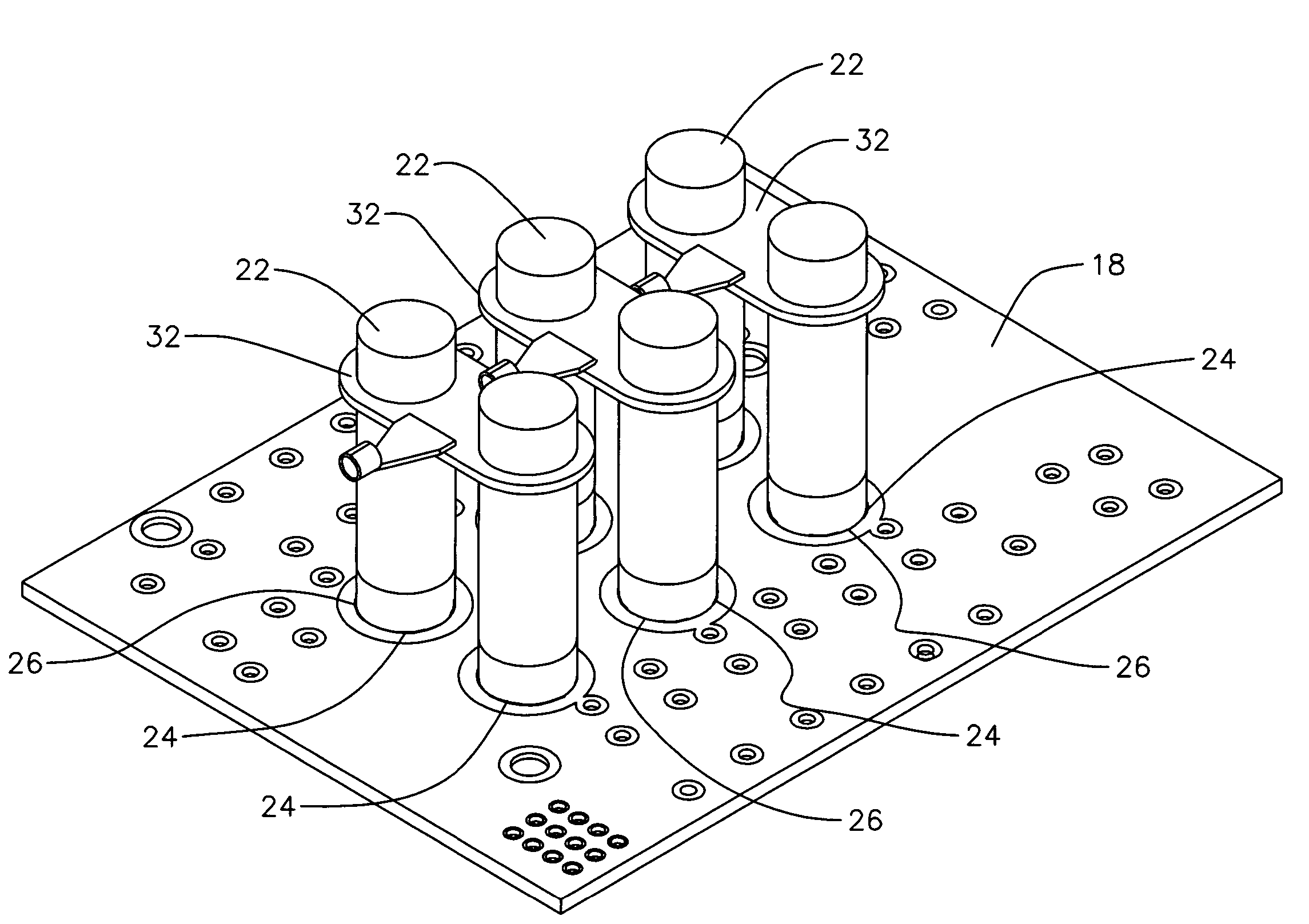Apparatus and method for fusing voltage surge and transient anomalies in a surge suppression device
a technology of surge suppression device and surge surge, which is applied in the direction of emergency protective arrangement for limiting excess voltage/current, rope railways, etc., can solve the problems of equipment to operate improperly or completely fail, transient over voltage or voltage surge become even more problematic, and the effect of reducing overall lead length and lesser impedan
- Summary
- Abstract
- Description
- Claims
- Application Information
AI Technical Summary
Benefits of technology
Problems solved by technology
Method used
Image
Examples
Embodiment Construction
[0022]Throughout the following detailed description, the same reference numerals refer to the same elements in all figures.
[0023]Referring to FIG. 1, an electrical schematic diagram is shown illustrating a fused transient surge suppression circuit 10 employed with a transient voltage surge suppression device of the present invention. As shown, circuit 10 employs a plurality of Metal Oxide Varistors (MOVs) V1-V20 arranged in three columns (one for each phase of a three phase line) but electrically coupled in parallel. It is understood that nothing herein limits the use of this novel circuit with either single or two phase lines. It is further understood that any number of MOVs or like surge suppression components can be employed per column. Also, the number of columns can vary dependent upon the modes of protection for the surge suppression application. FIGS. 1-3 illustrate a preferred embodiment wherein a three phase line is employed having Phase A, Phase B, Phase C, Neutral and Gro...
PUM
 Login to View More
Login to View More Abstract
Description
Claims
Application Information
 Login to View More
Login to View More - R&D
- Intellectual Property
- Life Sciences
- Materials
- Tech Scout
- Unparalleled Data Quality
- Higher Quality Content
- 60% Fewer Hallucinations
Browse by: Latest US Patents, China's latest patents, Technical Efficacy Thesaurus, Application Domain, Technology Topic, Popular Technical Reports.
© 2025 PatSnap. All rights reserved.Legal|Privacy policy|Modern Slavery Act Transparency Statement|Sitemap|About US| Contact US: help@patsnap.com



